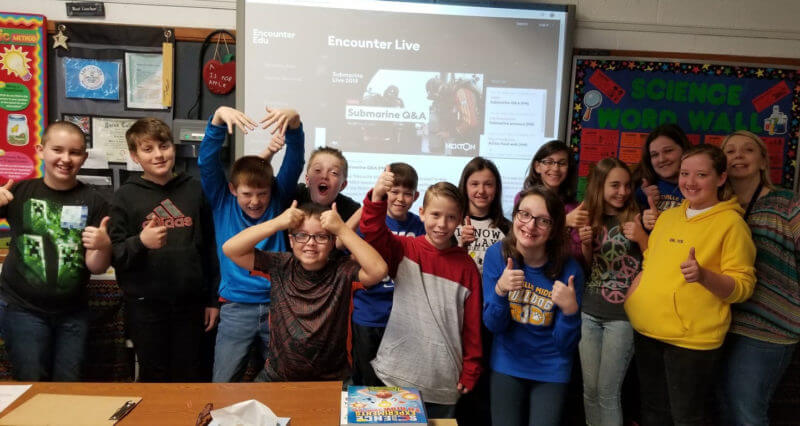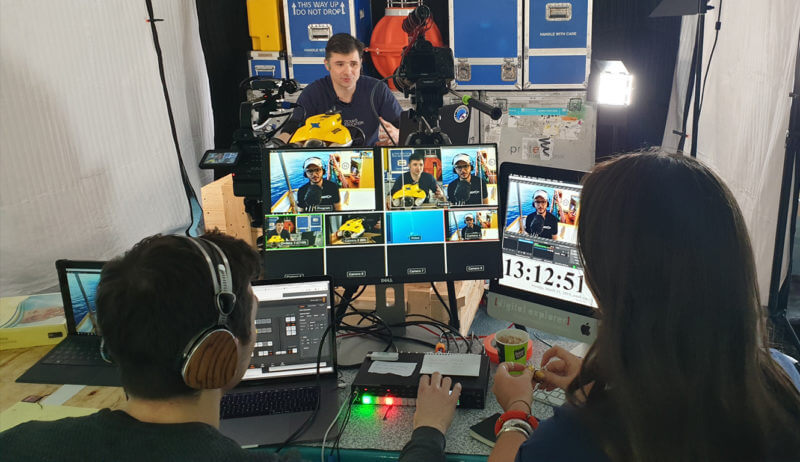An engaging ocean-themed scheme of work for KS2...
Children ask some great questions and despite our oceans of knowledge, sometimes we are just out of our depth. Try this one for size: How big and how deep is the ocean? OK, we could just ‘Google’ it, but with 264 million results to choose from we are drowning in information.
On the other hand, you could dive into a sea-change resource with the minerals to help and make real waves in children’s understanding.

Encounter Edu designs and delivers sponsored STEM learning programmes specialising in producing live lessons on global topics. There are a number of units of work on offer each with their own lesson plans, fact sheets, activity sheets, images and videos.
At the heart of their resources is a magic mixture made up of inspiring awe, role models and pupil-led enquiry where they are introduced to real scientists and their work.
For primary there is Submarine STEM 7-11, made in partnership with Nekton Mission, which is a comprehensive scheme of work covering Materials, Forces and Living Things and delivers a real-world approach to answering 6 big questions.
Based on the exploratory submersible journeys undertaken as part of the game-changing scientific XL Catlin Deep Ocean Survey expedition off Bermuda, they present a variety of cross-curricular ocean themed investigations for children to immerse themselves in so they can develop their scientific literacy skills.
Now imagine if you could take children to the deep ocean and let them see and experience for themselves what it is all about. Well, with this remarkable resource you can using their super-impressive photos, videos and 360 virtual reality technology.

The lessons are perfect for capturing children’s interest and sparking their imaginations and thinking. Each one comes with a scene-setting overview and then very clear and concise lesson steps with focus areas and suggested timings.
These are supported by a downloadable lesson file containing PDF PowerPoints, activities, student sheets and more detailed notes which link to powerful videos and gallery pictures.
Within the lessons there are plenty of opportunities to plan, execute and assess scientific investigations which finish with a thrilling DT challenge.
The star feature is the ability to view 360 media where children can literally experience a whole new world of wows. Don’t worry, there is a fool-proof guide for getting started with 360VR in the classroom.
The lessons help children to appreciate the scale and depth of the ocean, what lives there, what forces affect submarines and how materials are chosen for them. They work together to design and construct a crane for launching a submarine, build a submersible and learn how to recover it with levers and pulleys.
This is an exceptional scheme of work to help children explore and discover the wonders of deep-sea exploration through a series of inspiring and immersive lessons; they’ll have a whale of a time and an increased desire to learn more.
With 95% of the ocean still unexplored, children have plenty of secrets to discover for themselves and thanks to Encounter Edu, we are all explorers.
You are looking to inspire the next generation of scientists and explorers and grow ocean literacy for a sustainable future using an engaging and unified approach to learning.
Cost: these resources are free! Other brilliant projects are also available including Ocean Plastics, Our Ocean Planet, Frozen Oceans, Coral Oceans, Google Expeditions and Code Smart.
Find out more at encounteredu.com/teachers/units/submarine-stem-science-ages-7-11.
Reviewed by John Dabell
Help with Homework just got older!
Ace-Classroom-Support
The Niki Davies Calendar of Songs
Ace-Music
